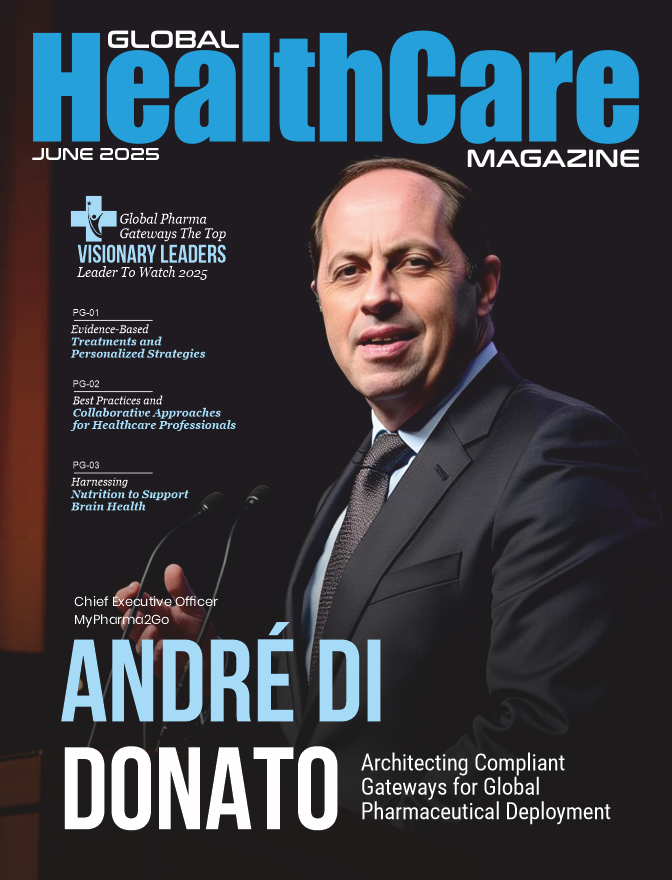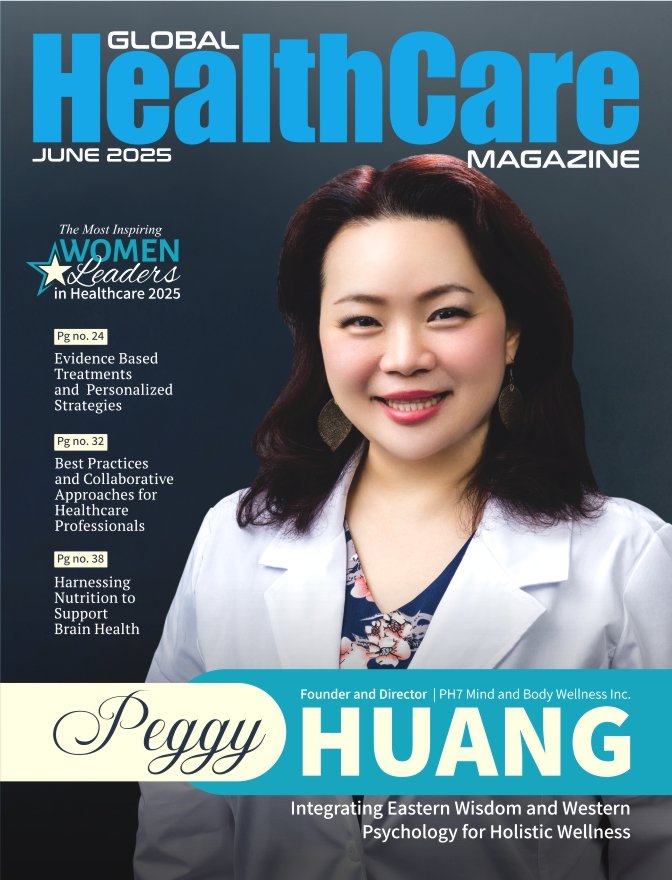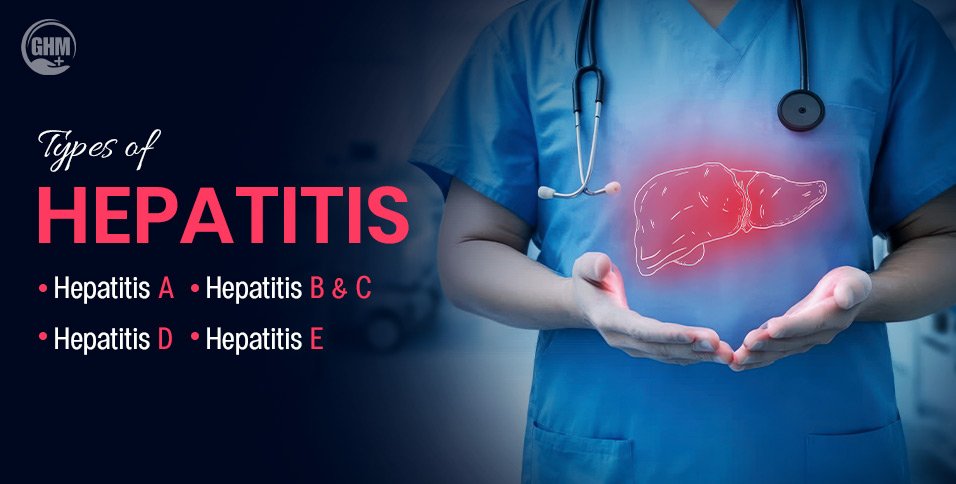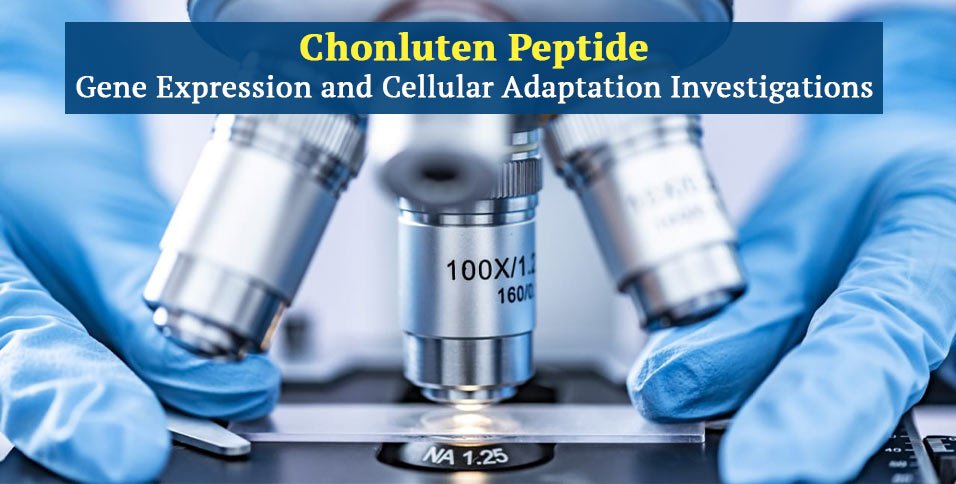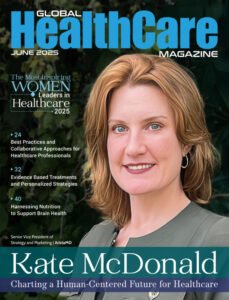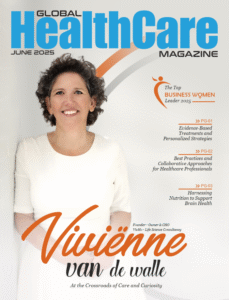Innovative leaders and entrepreneurs drive improvement in healthcare. They find new ways to enhance patient care and make operations more efficient. These individuals dedicate themselves to advancing healthcare. They tackle the challenges of the sector with resilience. Successful leaders create environments that encourage creativity, which leads to better health outcomes. Healthcare entrepreneurs use technology and new practices. They change how services are delivered. They raise the bar for patient care, making it more accessible and focused on patient needs.
Dr. Albert Chin, Co-founder and Chief Innovation Officer at Orare Medsystems Inc., stands as a prominent figure in this field. Marquis Who’s Who Top Healthcare Professionals recognized Dr. Chin for his dedication, achievements, and leadership in Medicine. He is a respected medical professional known for his skills as an entrepreneur. Over his 40-year career, he co-founded several medical device startup companies. He invented numerous technologies. He established himself as a leading business expert in healthcare. Currently, Dr. Chin manages four unique companies: he has served as the co-founder and chief innovation officer of TAS Medical Inc. since 2017, PercAssist Inc. since 2019, FemDx Medsystems Inc. since 2020, and Orare Medsystems Inc. since 2022.
Building a Foundation of Knowledge and Skill
Dr. Chin built his remarkable career on a foundation of rigorous education and diverse experiences. He began his academic journey at the Massachusetts Institute of Technology (MIT), where he earned a Bachelor of Science in mechanical engineering in 1975. He then pursued further studies at Stanford University, completing a Master of Science in mechanical engineering in 1976. He also undertook coursework in human biology in 1979. Shortly thereafter, Dr. Chin received a Doctor of Medicine from the University of California in San Francisco in 1983. His educational pursuits also included a surgical residency at Parkland Memorial Hospital, University of Texas Southwestern Medical Center in 1985.
Dr. Chin dedicated his early career years to research. He began his journey in 1978 as a researcher in cardiovascular medicine. Seeking to strengthen his application to medical school, he actively involved himself in designing new medical instruments. He reached out to his mentor, Dr. Thomas J. Fogarty, a successful surgeon and medical device inventor. Their collaboration soon led to his first patented invention, a linear everting balloon catheter. Dr. Chin spent over 10 years conducting cardiovascular research under Dr. Fogarty’s guidance between 1978 and 1989.
Navigating the Entrepreneurial and Corporate Landscape
After graduating from the UCSF School of Medicine in 1983, Dr. Chin participated in a general surgical residency. He held the goal of becoming a cardiothoracic surgeon. However, he took a break from his surgical training. He wanted to work on more research with Dr. Fogarty. This decision proved pivotal. It led him to co-found his first medical device startup, Origin Medsystems, Inc. The company later achieved acquisition by Eli Lilly & Company. This acquisition eventually became part of Guidant Cardiac Surgery. It then transitioned into Boston Scientific Cardiac Surgery.
Dr. Albert Chin also participated in a medical device incubator called Pavilion Medical Innovations LLC, funded by Catalyst Health Ventures. He helped spin out several startup companies through this incubator, including Saphena Medical, Inc. and Cruzar Medsystems, Inc. He garnered significant success in corporate roles as well. He served as the vice president of research at Guidant Cardiac Surgery from 1994 to 2007. He was the chief innovation officer at Boston Scientific Cardiac Surgery between 2007 and 2008. He held the same role at Maquet Cardiovascular from 2008 to 2009. He has since taken on the role of primary inventor for new technologies and co-founder of his current portfolio of startups.
A Prolific Inventor Shaping Medical Practice
Dr. Chin established himself as a prolific inventor in his field. He secured 230 patents, resulting in multiple medical devices and other inventions that impact patient care today. His background in mechanical engineering and general surgery provides him with a unique perspective. “My background in mechanical engineering and general surgery enables me to visualize novel device solutions to critical clinical needs,” Dr. Albert Chin says. He uses this insight to construct iterative prototypes. This process helps him achieve proof of concept for novel instrumentation and techniques.
His motivation for working in medical device design stems from a powerful conviction. He sees the potential to improve the lives and well-being of millions of patients worldwide. He develops new therapies that can become the standard of care. This goal drives his innovative efforts.
Tackling the Challenge of Adoption
As a creator of new technology and therapeutic techniques, Dr. Chin confronts significant challenges. He highlights one key obstacle: the learning curve associated with physician adoption of novel procedures. He understands that advancements in global healthcare do not truly help patients if only a small number of healthcare professionals can use new therapies.
To address this crucial issue, Dr. Albert Chin emphasizes simplicity in his device designs. He focuses on making his products easy to use and easy to adopt. These factors represent crucial elements in ensuring more healthcare workers can successfully implement his innovations. He builds designs with the end-user—the physician or healthcare professional—firmly in mind.
Mission: Targeting High-Impact Clinical Needs
As Chief Innovation Officer, Dr. Chin concentrates his efforts on specific areas to promote meaningful change in the healthcare sector. His companies and designs target clinical conditions that have high rates of illness and death. He seeks to make the biggest difference in patient care.
Dr. Chin primarily focuses on the cardiovascular system. Heart disease remains the leading cause of mortality worldwide. Additionally, he identifies malignancies and complications related to obesity as important areas for developing therapeutic devices. By addressing these critical global health issues, Dr. Chin aims to create solutions that significantly improve patient outcomes on a broad scale.
A Breakthrough Achievement in Surgery
One of Dr. Albert Chin’s proudest achievements represents a significant advancement in surgical technique. He designed tools used for the endoscopic vein harvesting (EVH) procedure during coronary artery bypass surgery. Surgeons previously made a long incision in the leg to remove the greater saphenous vein for use as a graft. This lengthy incision often caused more pain than the chest incision made during open heart surgery. Furthermore, infections occurred in 25% to 40% of patients afterward.
Thirty years ago, Dr. Albert Chin created a solution. He designed an endoscopic dissection device featuring a transparent conical tip. This design allowed doctors to see the vein while performing the procedure through just a one-inch incision. He personally carried out the first dozen procedures. He then trained physician assistants in the technique. Today, these assistants have performed endoscopic vein harvesting in over 3 million patients. “My devices have become the standard of care,” he says, noting that over 90% of coronary bypass procedures in the U.S. use the endoscopic technique. This success story highlights the significant, lasting impact of Dr. Chin’s work on patient care and surgical practices.
Transforming Heart Failure Treatment: PercAssist
Dr. Chin currently manages four startup companies. Three remain in the early development stages. One is transitioning into commercialization. He has achieved a notable advancement with PercAssist Inc. The company conducts clinical trials for a left ventricular assist device (LVAD), also known as an artificial heart. Dr. Chin designed this device to support patients experiencing cardiogenic shock or advanced heart failure. The design involves implanting a balloon in front of the left ventricle, inside the pericardial sac.
The ultimate goal involves placing the device non-surgically in a catheterization lab. Dr. Chin and his team presented the biomechanical principles behind the device, a summary of the preclinical tests conducted, and initial data from human use at a key medical conference. They shared this information at the 70th annual meeting of the American Society of Artificial Internal Organs (ASAIO) in April 2024 in Baltimore. This presentation marked a significant step in bringing this potentially life-saving technology closer to wider patient access.
Technology and Innovation in Device Design
Dr. Albert Chin’s startup companies aim to simplify the design of their innovative medical devices while ensuring they remain functional and effective. Achieving this balance often requires advanced technology. This includes improvements in materials, manufacturing techniques, sensors, electronic controls, and software development.
The PercAssist cardiac assist balloon provides a prime example. He designed it for patients with heart failure. This device inflates with each heartbeat, triggered by the patient’s ECG signal. It aims to serve as a long-term implantable solution for end-stage heart failure patients who are not suitable candidates for heart transplantation. The design demands extreme reliability. The balloon must endure over 40 million cycles of inflation and deflation within a year before replacement. Initially, Dr. Chin used an inelastic polyethylene terephthalate (PET) balloon. Tests found it inadequate due to early ruptures. After further testing, his team identified a partially elastic polyurethane material. This material achieved 60 million cycles during manufacturing tests, meeting the stringent durability requirements.
Additionally, the software controls for the cardiac assist balloon ensure proper function. The balloon inflates during the heart’s contraction phase (systole) based on the ECG signal. An algorithm minimizes any delay between the signal and balloon inflation. This allows the device to accommodate heart rates of up to 130 beats per minute.
Integrating AI and Fostering Continuous Improvement
Dr. Albert Chin’s design philosophy emphasizes simplicity. This approach makes his novel devices suitable for robotic-assisted techniques in the future. Integrating advanced technologies allows his devices to benefit from the analysis and modulation of large datasets of physiological parameters through artificial intelligence.
As new devices and therapies are introduced, they undergo rapid improvements. This process relies on initial clinical use and feedback from physicians. This allows for the continuous evolution of the devices. It incorporates advanced technologies into the original designs, ensuring they become more effective and easier to use over time.
Building Strategic Partnerships
Dr. Albert Chin’s startup medical device companies actively seek strategic partnerships with established device companies. They currently engage in communication during the development and clinical trial phases. PercAssist, Inc., with its unique platform approach, demonstrates particular openness to collaborating with larger companies. This device is crucial for sustaining life. It will require a large-scale pivotal clinical trial for regulatory approval. Typically, major medical device companies prefer to conduct these pivotal trials under their direct oversight.
Meanwhile, Dr. Chin’s other startup companies work on products that will require 510(k) clearance from regulatory bodies. These products will focus on commercialization and market development. They will then become candidates for acquisition by established entities.
The Future of Healthcare: A Proactive Vision
The healthcare industry changes quickly. Dr. Albert Chin identifies important trends that will likely define its future. Traditionally, medical devices have provided treatment after an illness has occurred, representing a reactive approach. However, the future may focus more on proactive care. It will aim to prevent illnesses before they happen.
Both cardiovascular disease and cancer have genetic components. This opens the door for innovative solutions rooted in genetic understanding. Advances in biological engineering, particularly through gene editing, could allow for early intervention. This could address diseases linked to genetic mutations or congenital conditions. This shift towards prevention could significantly improve patient outcomes. It possesses the power to reshape how healthcare is delivered globally.
Leading by Example
Dr. Chin believes that leading by example offers the best way to encourage innovation within his companies. He creates iterative prototype devices for all his designs. This demonstrates their functionality and establishes proof of concept. Once he is satisfied with how the device performs through bench, in vitro, and in vivo testing, he prepares a detailed disclosure of the technology. This includes drawings. He shares it with his team.
The conversation about product improvements continues throughout the clinical trial and market release phases. Dr. Chin actively involves his team in the development process. He encourages open discussions. He provides an environment where new ideas can flourish and contribute to shaping the industry.
Top Challenges for Medical Device Leaders
Dr. Albert Chin identifies key challenges for leaders in the medical device industry. These require careful strategic navigation.
- Selecting the Right Clinical Target: Leaders must identify suitable clinical conditions to focus on for device design, targeting areas with the greatest unmet need.
- Ensuring Economic Feasibility: It is essential to provide device solutions that offer value and prove financially viable for healthcare systems and patients.
- Facilitating Timely Adoption: Leaders need to ensure healthcare professionals adopt new techniques and devices quickly, overcoming the inherent learning curves and resistance to change.
Advice for Emerging Innovators
Dr. Albert Chin offers direct advice for emerging leaders in the healthcare sector. He advises them to focus on creating design solutions for clinical issues that have the highest rates of illness and death. He specifically targets those conditions that currently lack effective treatments or have unsatisfactory approaches. By focusing on these critical areas, he believes they can make a meaningful impact and help improve patient outcomes in significant ways.
A Vision for Global Impact
Dr. Chin’s long-term vision for his medical device startup companies centers on creating innovative devices and techniques that become the standard of care for addressing critical clinical needs worldwide. He hopes that the journey from research and development to initial clinical use, followed by regulatory approval and market release, will lead to swift adoption in clinical settings globally. Ultimately, this process aims to provide significant benefits to patients around the world, improving healthcare outcomes on a global scale.
Also Read: The 10 Robust Healthcare Leaders of 2025



